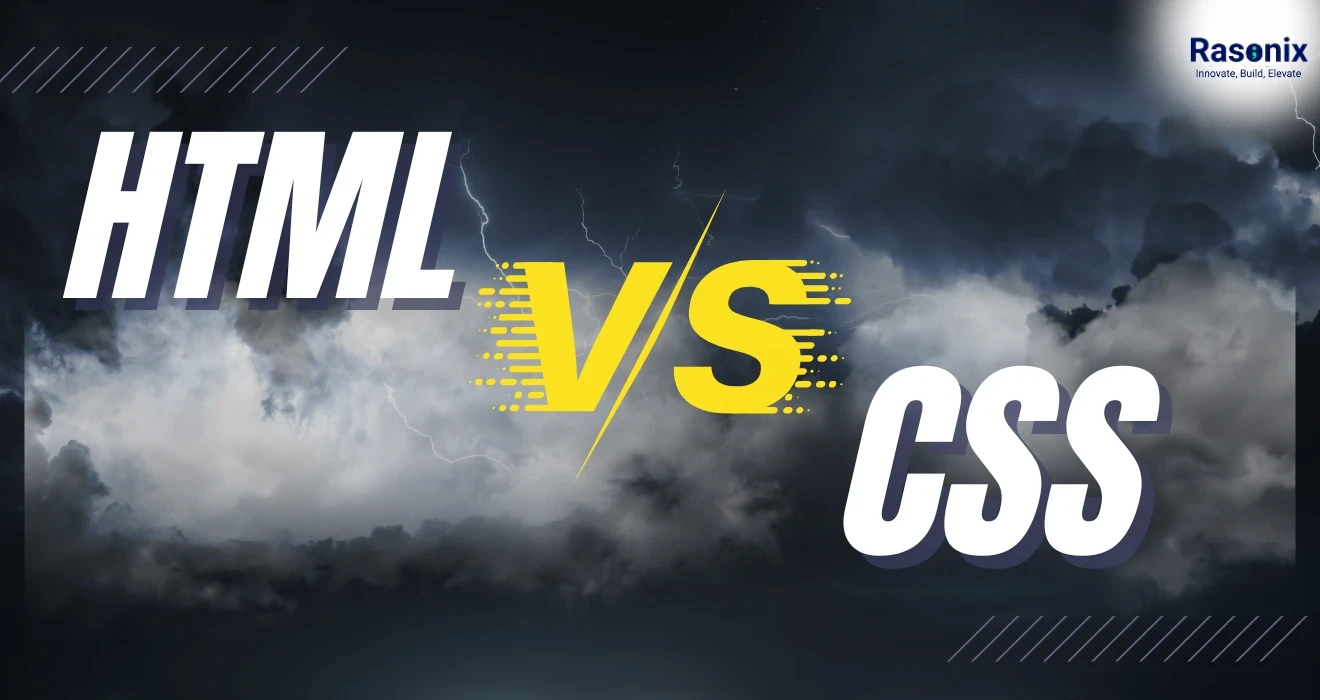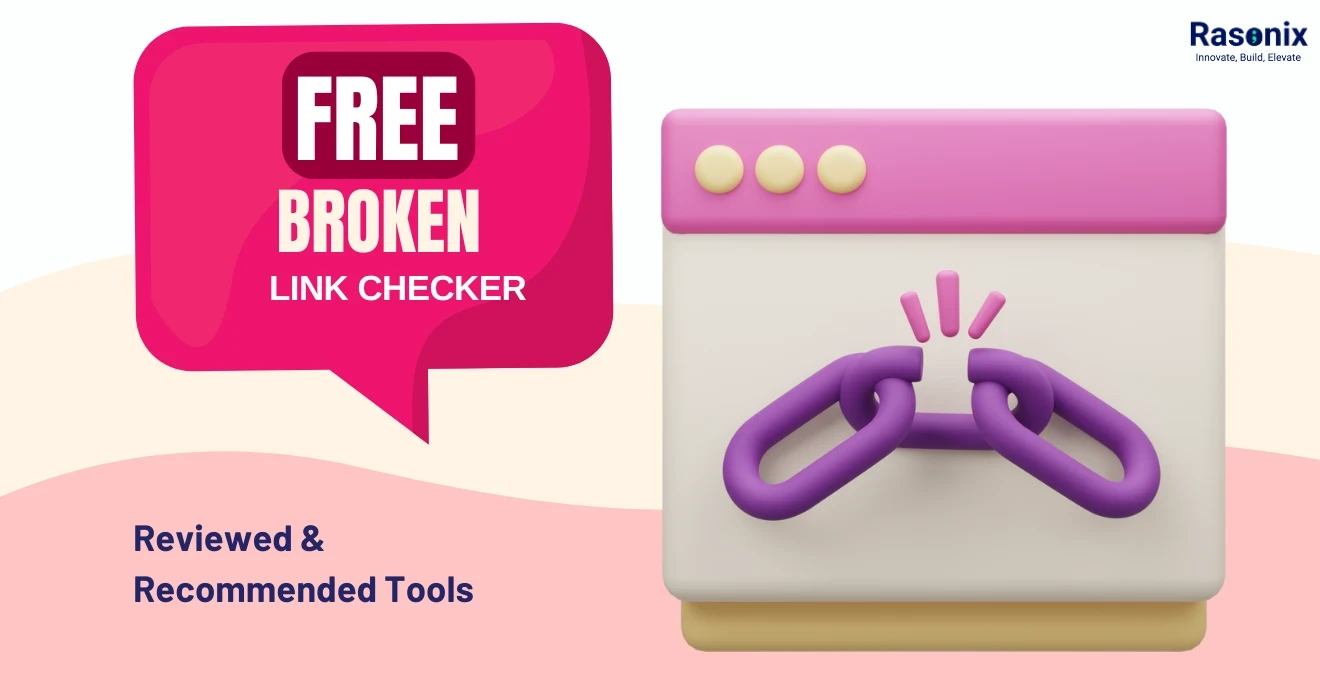In the age of the Internet, websites represent the face of your company, business, blog, and so many more digital experiences. Behind every beautiful and fully functional website are the core technologies, HTML and CSS. HTML and CSS are the essential foundational elements of the web. While sometimes newcomers confuse their purpose, instead of debating HTML vs CSS, the conversation should not be about which technology is better, but about how HTML and CSS work together to form a complete web page. In this article, we will discuss the difference, purpose, and interplay of the two web technologies.
HTML: Structuring Web Content
Definition:
HTML (HyperText Markup Language) is the markup language that is the standard way to create the structure of web pages; it is the backbone of the web.
Purpose:
HTML provides the structure to organize content on a web site. It defines elements like headings, paragraphs, images, links, and tables, and these elements together form the layout of a page.
Elements and Tags:
HTML is composed of tags that tell the browser how to display content.
Example:
|
<!DOCTYPE html>
<html>
<head>
<title>My First Web Page</title>
</head>
<body>
<h1>Hello, world!</h1>
<p>This is a paragraph.</p>
</body>
</html>
|
Semantic HTML:
Semantic tags like <header>, <article>, and <footer> enhance accessibility, SEO, and code clarity. They tell search engines and screen readers what each part of the page means.
Summary:
HTML provides the “what” the content and structure of a web page. It answers: What is displayed?
CSS: Styling and Presentation
Definition:
CSS (Cascading Style Sheets) is used to define the look and layout of HTML elements on a page.
Purpose:
CSS is responsible for visual presentation, including:
● Colours
● Fonts
● Spacing
● Alignment
● Animations
● Responsive design
Selectors, Properties, and Values:
CSS uses selectors to target HTML elements and apply styles.
Example:
|
h1 {
color: blue;
font-size: 36px;
}
|
CSS Box Model:
Every HTML element is a rectangular box consisting of:
● Content
● Padding
● Border
● Margin
Understanding the box model is crucial for precise element spacing.
Layout Techniques:
Modern CSS offers advanced layout methods:
● Flexbox: One-dimensional layouts.
● Grid: Two-dimensional layouts.
Example:
|
.container {
display: flex;
justify-content: center;
align-items: center;
}
|
Summary:
CSS provides the “how” how content should look. It answers: How is it displayed?
Key Differences: Structure vs. Presentation
Core Distinction
The key distinction in HTML vs CSS is the separation of concerns:
● HTML handles structure and content.
● CSS manages style and layout.
HTML: The What
HTML is responsible for the actual elements that appear on the web page, such as:
● Headings (<h1>, <h2>...)
● Paragraphs (<p>)
● Images (<img>)
● Lists (<ul>, <ol>)
● Forms and inputs (<form>, <input>)
Each of these elements provides the browser with information on what content to display.
CSS: The How
CSS is not concerned with the content itself but with how it looks:
● What colour is the text?
● What font should it use?
● How much space is around each element?
● Should the layout be responsive on mobile devices?
Maintainability and Scalability
● HTML and CSS can be separated in a way that makes the pages easier to update, maintain and debug.
● You can change the entire look and feel of a site for example simply by changing a single CSS file.
● Modularity and reusability are critical in larger-scale projects.
Performance and Loading
● HTML loads the page content.
● CSS loads styles and can be cached separately, improving load speed and performance.
Developer Workflow
● Designers often focus on CSS.
● Developers may focus on HTML structure, linking it to back-end logic.
● This clear division improves team collaboration.
Summary Table:
| Feature |
HTML |
CSS |
| Type |
Markup Language |
Style Sheet Language |
| Purpose |
Structure and content |
Visual presentation |
| Syntax |
Tags and attributes |
Selectors, properties, values |
| Example Tag/Rule |
<h1>Title</h1> |
h1 { color: red; } |
| Focus |
What content is displayed |
How content is displayed |
| File Extension |
.html |
.css |
| Involved in Layout? |
Basic layout only |
Advanced layout (Flex/Grid) |
HTML and CSS in Practice: Collaborative Functionality
HTML and CSS are designed to work together. Here’s how:
Linking CSS to HTML
You can apply CSS to HTML in three ways:
Inline Styles
|
<h1 style="color: red;">Inline Style</h1>
|
Internal CSS (within <style> tags in HTML)
|
<head>
<style>
p { color: green; }
</style>
</head>
|
External Stylesheet (best practice)
|
<head>
<link rel="stylesheet" href="styles.css">
</head>
|
Cascading and Inheritance
● Cascading means the browser chooses the most specific style rule.
● Inheritance allows child elements to inherit parent styles unless overridden.
Real-World Example
|
<!DOCTYPE html>
<html>
<head>
<link rel="stylesheet" href="styles.css">
</head>
<body>
<div class="card">
<h2>Welcome</h2>
<p>This is a styled card.</p>
</div>
</body>
</html>
.card {
background-color: #f9f9f9;
padding: 20px;
border-radius: 8px;
}
.card h2 {
color: #333;
}
|
Addressing Related Technologies: HTML, CSS, and JavaScript
JavaScript’s Role:
JavaScript is a programming language that adds interactivity to web pages.
While HTML and CSS define structure and style, JavaScript allows you to:
● Create sliders and dropdowns
● Validate forms
● Load data dynamically
● Handle user events (clicks, scrolls)
Clear Distinction:
● HTML = content
● CSS = presentation
● JavaScript = interaction and behaviour
When to Use:
| Technology |
Used For |
| HTML |
Defining page content |
| CSS |
Styling and visual formatting |
| JavaScript |
Making content interactive or dynamic |
Maintainability:
● Use semantic HTML.
● Keep CSS in external stylesheets.
● Use descriptive class names.
● Keep code well-commented and formatted.
Accessibility:
Use alt attributes for images, ARIA roles, and semantic elements to ensure your site is usable by screen readers and assistive technologies.
Conclusion:
Understanding HTML vs CSS is fundamental for any aspiring developer. They serve different yet complementary purposes:
● HTML defines what content is presented.
● CSS defines how that content appears.
While HTML gives your website a backbone, CSS dresses it up and brings it to life. They are both essential and inseparable in modern web development.
By mastering both, developers can create not only functional but also visually stunning, responsive, and accessible websites. Always remember: use the right tool for the right job.
If you're just getting started, first learn HTML to create structure. Then, move to CSS in order to handle presentations. Finally, learn JavaScript to add functionality.
Want to create high-performance, beautiful websites?
At Rasonix, we build modern, high-performance, responsive user interfaces using HTML, CSS, and JavaScript. Whether you're a startup or have an established company or brand, our development talents can make your idea a reality with beautiful design, fast performance and clean code.
Contact Rasonix today to start your web development journey, or let us do it for you!


















 Subscribe Now
Subscribe Now